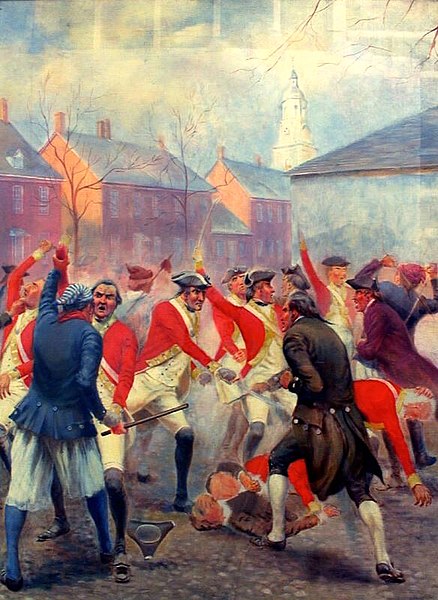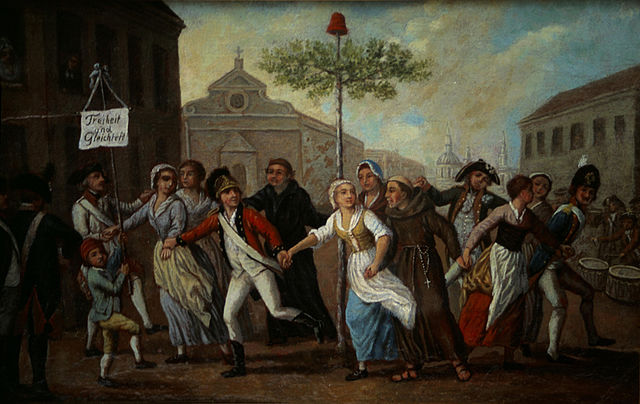The Battle of Golden Hill was a clash between British soldiers and the Sons of Liberty in the American colonies that occurred on January 19, 1770, in New York City. Along with the Boston Massacre and the Gaspée Affair, the event was one of the early violent incidents in what would become the American Revolution.
Print from 1884 commemorating the Battle of Golden Hill
Battle of Golden Hill, by Charles M. Lefferts, circa 1919–1920
A liberty pole is a wooden pole, or sometimes spear or lance, surmounted by a "cap of liberty", mostly of the Phrygian cap. The symbol originated in the immediate aftermath of the assassination of the Roman dictator Julius Caesar by a group of Rome's Senators in 44 BCE. Immediately after Caesar was killed the assassins, or Liberatores as they called themselves, went through the streets with their bloody weapons held up, one carrying a pileus carried on the tip of a spear. This symbolized that the Roman people had been freed from the rule of Caesar, which the assassins claimed had become a tyranny because it overstepped the authority of the Senate and thus betrayed the Republic.
Germans dancing round a Tree of Liberty/Liberty Pole, 1792–1795.
Gérard de Lairesse, the Dutch Maiden in his Allegory of the Freedom of Trade (glorify the De Graeff family’ as the protector of the Republican state), 1672
Dutch allegory for the Netherlands/US trade treaty, 1782. Personification of the Americas, left, "Indian princess" and classical hybrid for the US centre, Dutch Maiden right.
French painting of the Triumph of Liberty, c. 1790. The cap is a contemporary man's hat. The Gallic cock accompanies Liberty.






